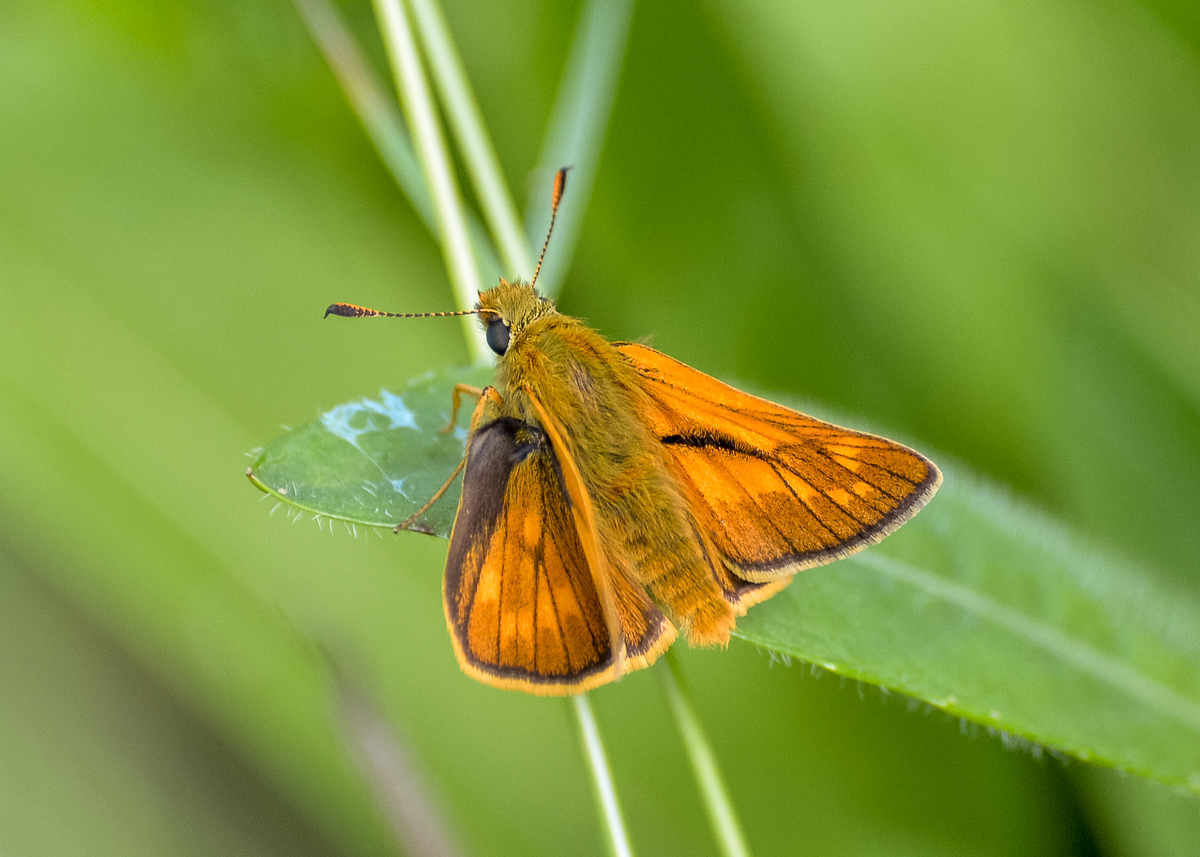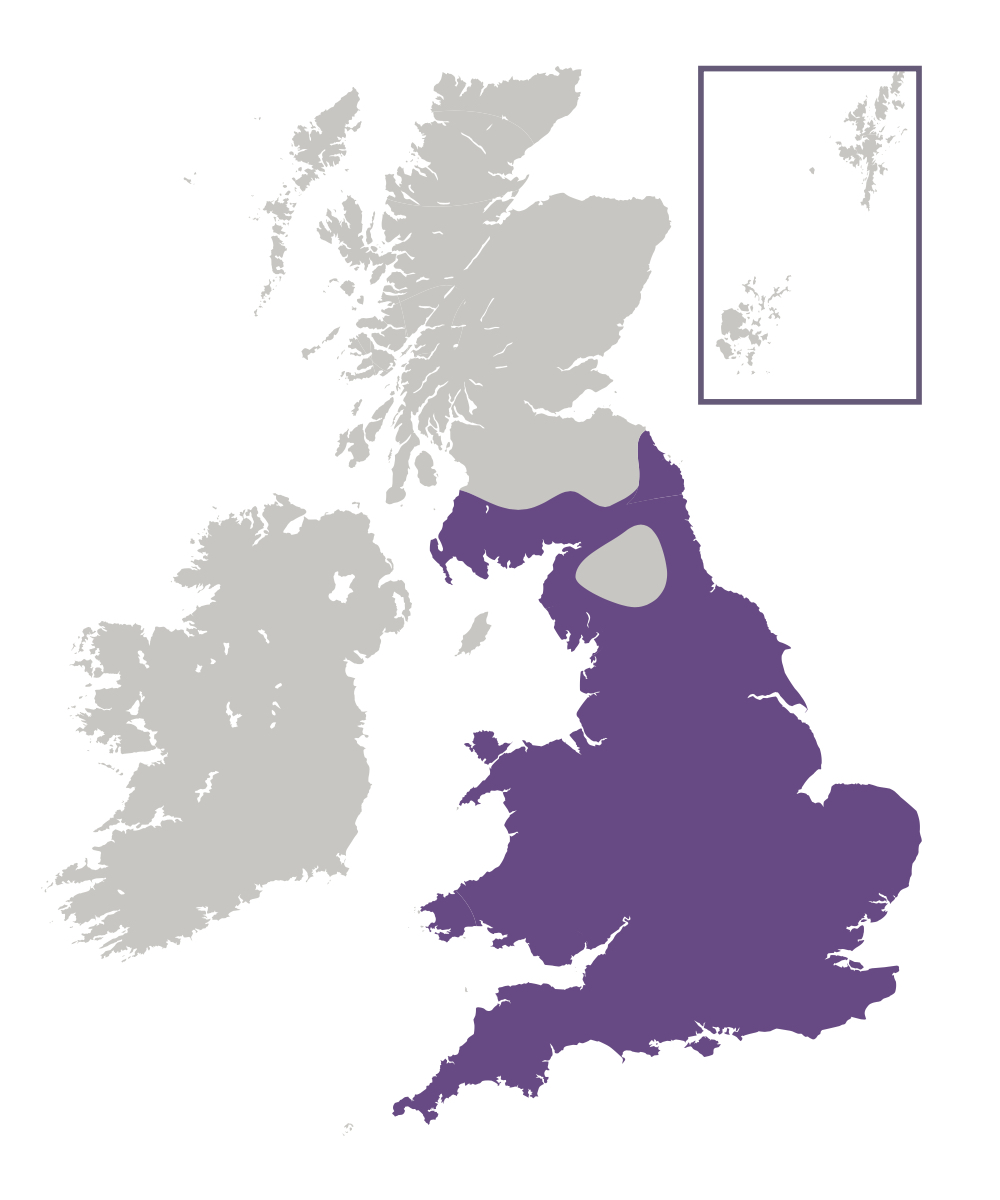
Photo © KEC
This is one of the largest of our "golden" skippers and, like these other skippers, the male has a distinctive sex brand on its forewings containing specialised scent scales. Although this species forms discrete colonies, it is widespread and can be found in England and Wales as far north as Ayrshire in the west and North Northumberland in the east. This species is not found in Ireland or the Isle of Man, and is restricted to Jersey in the Channel Islands.
Like many other skippers, the male of this species alternates between perching, patrolling, basking and feeding. Patrolling behaviour is normally exhibited late-morning, with perching behaviour the norm in the early morning and afternoon. When perching, the males will defend their territory vigorously, and see off any butterfly that intrudes. Typical perches are sunlit leaves at a height of around a metre from the ground. Both sexes take nectar, and are particularly fond of Bramble and Thistle. Egg-laying is normally performed during the early afternoon. An egg-laying female makes a short flight in between laying one egg and the next on the underside of a blade of grass.

This species is found in sheltered areas of grassland, where grasses grow tall. Typical sites include meadows, hedgerows, roadside verges, woodland rides and woodland clearings. It can also be found in urban areas, such as parks and churchyards.
Adults feed primarily on brambles (Rubus spp.) and thistles (Carduus spp. and Cirsium spp.). Bugle (Ajuga reptans), clovers (Trifolium spp.), Common Bird's-foot-trefoil (Lotus corniculatus), dandelions (Taraxacum spp.), Devil's-bit Scabious (Succisa pratensis), Field Scabious (Knautia arvensis), Kidney Vetch (Anthyllis vulneraria), knapweeds (Centaurea spp.), Ragged-Robin (Silene flos-cuculi), vetches (Vicia spp.), Wild Privet (Ligustrum vulgare) and Yarrow (Achillea millefolium) are also used.
The primary larval foodplant is Cock's-foot (Dactylis glomerata). False Brome (Brachypodium sylvaticum), Purple Moor-grass (Molinia caerulea), Tor-grass (Brachypodium rupestre) and Wood Small-reed (Calamagrostis epigejos) are also used.
